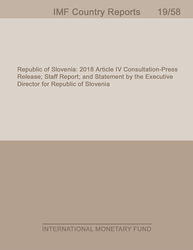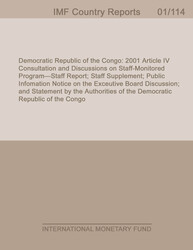
Indonesia: Staff Report for the 2013 Article IV Consultation
ISCR/13/362
KEY ISSUESContext: A slowdown in growth in major emerging market economies (EMEs) anddecline in commodity prices, and more recently, a reversal in push factors tied to aprospective exit from extraordinarily easy global monetary conditions, has put pressureon Indonesia's balance of payments and heightened its vulnerability to shocks. Domesticpolicy accommodation and rising energy subsidies have also given rise to increasedexternal and fiscal imbalances. Recent policy tightening, fuel price hikes, and exchangerate flexibility have been firmly aimed at reducing these pressures. Against thisbackdrop, discussions centered on actions needed to further buttress policy buffers inthe face of heightened market volatility and to reduce structural impediments in supportof broad-based growth.Outlook and risks: Growth is projected to slow to 5-5½ percent in 2013 and 2014.Inflation will likely peak at just below 10 percent at end2013,due mainly to the one-offeffect of June fuel price increases and recent rupiah depreciation. The current accountdeficit is expected to exceed 3 percent of GDP in 2013 and 2014 on weak commodityexports. Reserves have also come under pressure, partly due to Bank Indonesia's heavyintervention in the foreign exchange market in mid-2013 in order to stem the rupiah'sdepreciation. In the near term, downside risks relate externally to a further adverse shiftin funding conditions in EMEs and/or weaker-than-anticipated growth in theseeconomies, notably spillovers from China and India, and domestically to a furtherweakening in investor sentiment, prompted by adverse external conditions and/or policyuncertainty.Key policy recommendations: Recent market volatility and reserve losses highlight theneed to deal decisively with macroeconomic imbalances and contain financial stabilityrisks. The current delay in tapering of unconventional monetary policies provides anopportunity to strengthen policy and financial buffers and improve market perceptions.Monetary policy should remain focused on anchoring inflation expectations andreducing balance of payments pressures; fiscal policy should support monetary policy inthis effort, led by tax and subsidy reforms; and the exchange rate and bond yields shouldcontinue to reflect market conditions in order to facilitate an orderly adjustment to ashifting global environment. Careful monitoring of banks as financial conditions tightenand a firm closing of the gaps in the crisis management framework are needed to keepfinancial stability risks in check. Structural reforms should focus on a more predictablebusiness climate and greater labor market flexibility.
Publication date: December 2013
ISBN: 9781475597325
$18.00
Add to Cart by clicking price of the language and format you'd like to purchase
Available Languages and Formats
| English |
Prices in red indicate formats that are not yet available but are forthcoming.
Topics covered in this book
This title contains information about the following subjects.
Click on a subject if you would like to see other titles with the same subjects.
Also of interest
Summary
Copyright © 2010 - 2026
Powered by:
AIDC



